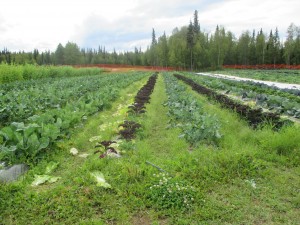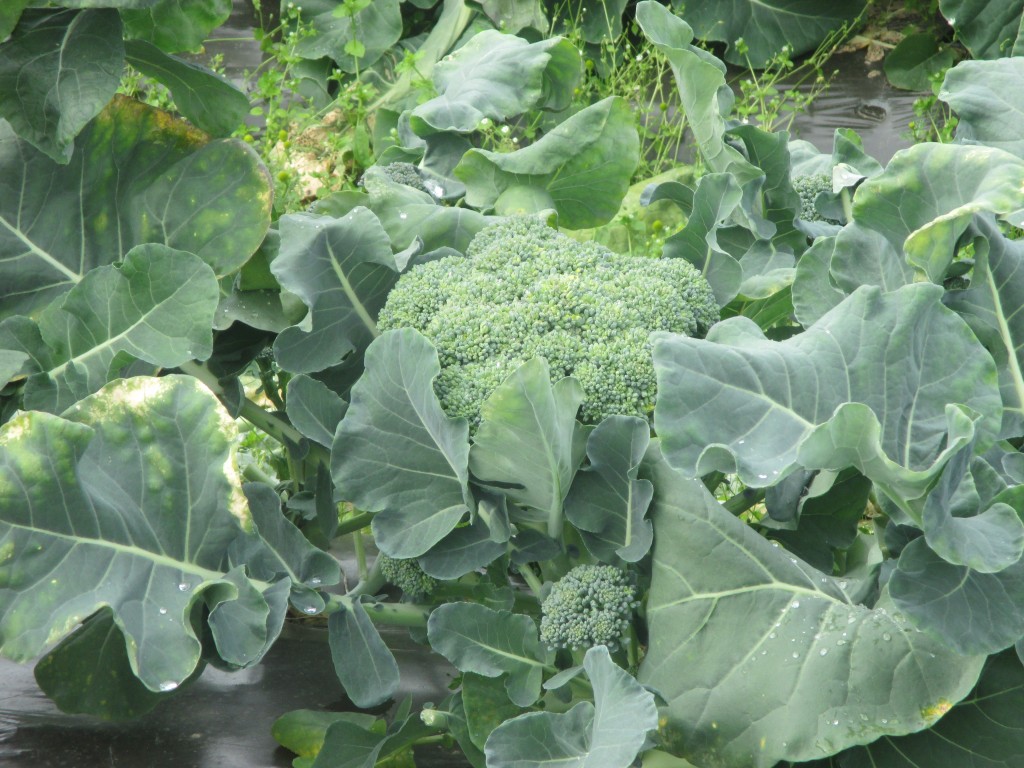Most food Alaskans consume comes from Outside. There are quite a few producers who grow and sell locally, however. Last week, KTNA’s Phillip Manning visited one farm that has been operating in the Upper Susitna Valley for the past 30 years.
In Alaska, the vast majority of the food we eat isn’t grown here. Patrick Likely of the Alaska Food Policy Council says the proportion of food grown in-state is very small.
“Five percent of food that’s consumed in Alaska is actually coming from Alaska.”

While most of the food does come from Outside, there are still a fair few local growers. In the Upper Valley, one such producer is Birch Creek Ranch. Birch Creek has been run by the Kingsbury family for the last three decades. Alan Kingsbury says that the family first acquired the land as an agricultural parcel from the state in 1981. Early on, the only products coming out of the property were a result of the clearing that the state requires on ag parcels.
“We sold firewood, saw-logs, lumber, and that sort of thing while we were getting the fields cleared and ready for production.”
As more land was cleared, Alan and Leilani Kingsbury began to grow crops. Their first sales began in the mid ’80s.
“We were growing some things and trying a lot of things, everything from sheep and goats to barley, wheat, sorghum, rye, foraged turnips, and potatoes. We grew seed potatoes for awhile.”
As time went on, the Kingsburys moved toward greenhouse production of flowers and away from things like potatoes and animals. They also have a large berry patch, where people can pay by the pound to come and pick currants and serviceberries.
Alan Kingsbury says that one issue facing farmers today as compared to the 1980s is a decreased level of state support.
“The state was much more gung-ho [about] agriculture back in earlier days, in our timeframe, when Jay Hammond was governor.”
Leilani Kingsbury agrees, and says one of the biggest issues that has faced Alaskan farmers for decades is the need for infrastructure, such as:
“Plants, places to store, cool, chill, clean, process, and equipment and supplies, and people to service and repair them are still all lacking, very much.”
Now, much of the growing at Birch Creek Ranch is done by Alan and Leilani’s son, Brian. Now, the farm grows about four acres of vegetables, including a number of

high-tunnel greenhouses. One way Brian sells his vegetables to locals is through a community-supported agriculture, or CSA, program. That lets individuals buy a “share” of the farm, which entitles them to a portion of the crops at harvest time. Brian also sells to local restaurants, but he says the majority of his revenue comes from old-fashioned farm stands.
“About a third of my business has been with the CSA. About half of it, now, is retail markets, and the rest of it is restaurants.
The restaurant contracts are growing, however. This year, Brian says that he has begun selling to the Talkeetna Alaskan Lodge, easily the biggest lodging facility in the area. In addition, he’s started selling at farm stands outside of the Valley.
“I saw that I needed to take things to Anchorage, and I started with a farm stand at the Alaska Native Medical Center Campus…It’s a big move for me.”
Brian says the Anchorage trips take an entire day in addition to the extra picking, but that it does allow him to break into a new market.
One local venue that makes extensive use of Brian Kingsbury’s produce is the Flying Squirrel Bakery and Cafe`. His wife, Anita Golton, is the majority owner and manager of the cafe`. She says that the businesses complement each other well.
“We just kind of do it all together…and it’s always made a lot of sense to take farm products from there. And, to be able to have other places to use those products seems like a valuable thing.”
Anita Golton says the Flying Squirrel has been recognized by the Alaska Department of Agriculture’s Restaurant Rewards program, which reimburses part of the cost of buying local ingredients in order to offset what are usually higher prices. Despite using over 600 pounds of rhubarb and various other ingredients from Birch Creek Ranch as well as other Alaska growers, Anita says the supply simply isn’t enough to keep up with production most of the time. As a result, a small portion of her total product is made with primarily Alaskan ingredients.
“I feel like we try to do as much as we can to integrate it in everything, and it’s probably a lot more in the middle toward the end of the summer, but it’s probably not more than one percent. The main reason for that is that there are so many ingredients that just aren’t available.”
The entire family agrees that visitors and locals alike enjoy the fact that they can have locally grown produce available during the growing season. Brian says he’s currently looking to consolidate on crops and markets that have proven successful in order to make Birch Creek Ranch a success for another generation.
– See more at: http://ktna.org/2014/08/19/upper-valley-agriculture-birch-creek-ranch/#sthash.dVGQDbQ6.dpuf




